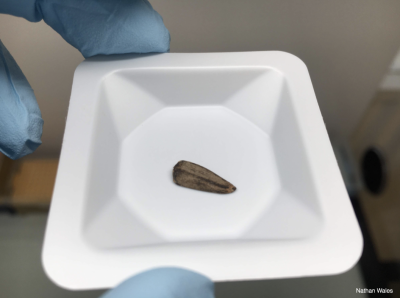A crop domestication center emerged ~5000 years ago in Eastern North America. Native Americans in this area transformed several wild plant species, including sunflower (Helianthus annuus) into staple crops. Archaeological evidence from Eastern North America and genomic evidence from extant cultivated and wild sunflower supports this narrative, and it was once thought that cultivated sunflower did not reach Mexico until after European colonizers established trade routes. However, several archaeological findings of putative sunflower achenes at sites in Mexico dating prior to European arrival have been advanced as evidence that sunflower was present in Mexico early, either due to early trade or as a result of an independent domestication event. We previously obtained DNA from one of these archaeological samples, and our initial analyses indicated a single shared origin with domesticated sunflower from ENA. However, the chloroplast DNA was extremely divergent, suggesting an origin from another species likely from another genus. To determine the origin of this chloroplast sequence, we have sampled and sequenced at low coverage the genomes of herbaria records for a set of over 20 annual species in related genera in the Asteraceae that occur in this region of Mexico. Analyses are underway to determine which appears the closest to the ancestor of the divergent chloroplast genome, whether there is also introgression observed for the nuclear genome of the Mexican archaeological sample, or whether the Mexican archaeological sample may be wholly another taxon.
Benjamin
Blackman
Research Date:
2023
Research Website:
Region(s):
Research Theme(s):
Campus Affiliation:






